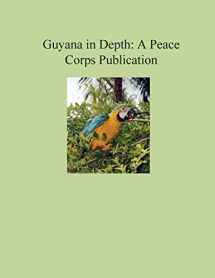
Guyana in Depth: A Peace Corps Publication
Book details
Summary
Description
Guyana was named by its first people, the Amerindians semi-nomadic tribes who lived by hunting and fishing. To them, this was a rich land with plenty of water for farming and fishing. They called it Guiana, meaning land of many waters. Sir Walter Raleigh was the first European to explore the wild coast of Guyana. The country itself changed hands several times between the French, Dutch, and British before the British finally held it until independence in 1966. The early European colonists were planters. At first they relied on Amerindians for their labor force, but over time they replaced them with African slaves, who also worked to construct the coastal drainage system and the city of Georgetown. Following a period of slave uprisings and a campaign to end the slave-labor system, slavery was abolished in 1834. With the end of slavery, indenturing became the new mode of accessing labor. Workers were brought in from the island of Madeira (Portugal) and from China and India (whose people are known in Guyana as East Indians) to work on the estates. By the early 1900s, a slow transfer of power was underway from the colonial administration to the Afro Guyanese and Indo Guyanese political groups. Limited self-government was granted in the 1950s, but political conflict and occasional violence between these groups delayed independence. By 1964, though, support began to grow for independence, which was achieved on May 26, 1966. Guyana joined the United Nations later that year, and the country became a charter member of the Caribbean Free Trade Association (CARIFTA) in 1968. On February 23, 1970, Guyana was proclaimed a republic. Guyana is a member of the British Commonwealth and of the Caribbean Community and Common Market (CARICOM). CARICOM‘s headquarters is in Georgetown.


We would LOVE it if you could help us and other readers by reviewing the book
Book review



